
Tipi visits or glimpses into the past
N 51°33'336'' E 099°15'341''
Day: 163-165
Sunrise:
09:28/09:28
Sunset:
17:23/17:28
Total kilometers:
1281
Soil condition:
Ice, snow
Temperature – Day (maximum):
minus 17°C
Temperature – day (minimum):
minus 25°C
Temperature – Night:
minus 33°C
Latitude:
51°33’336”
Longitude:
099°15’341”
Maximum height:
1981 m above sea level

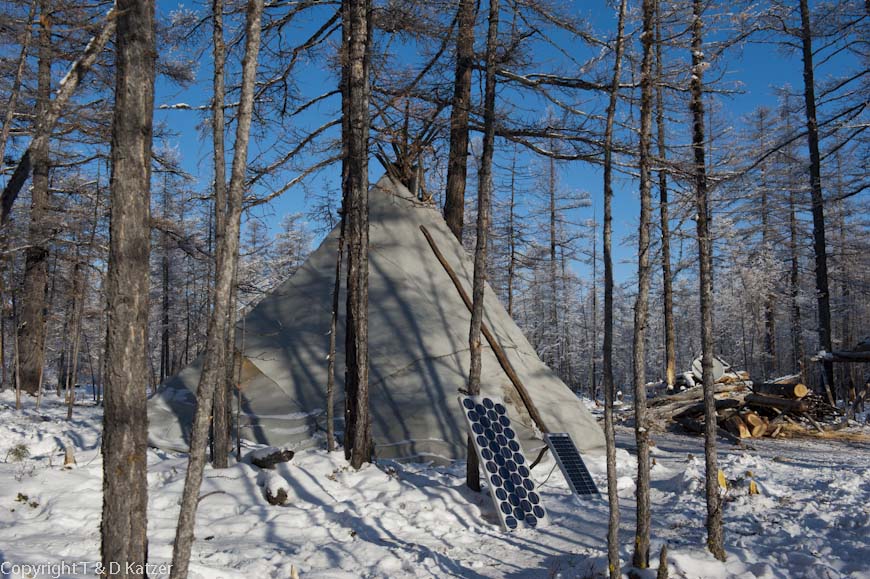
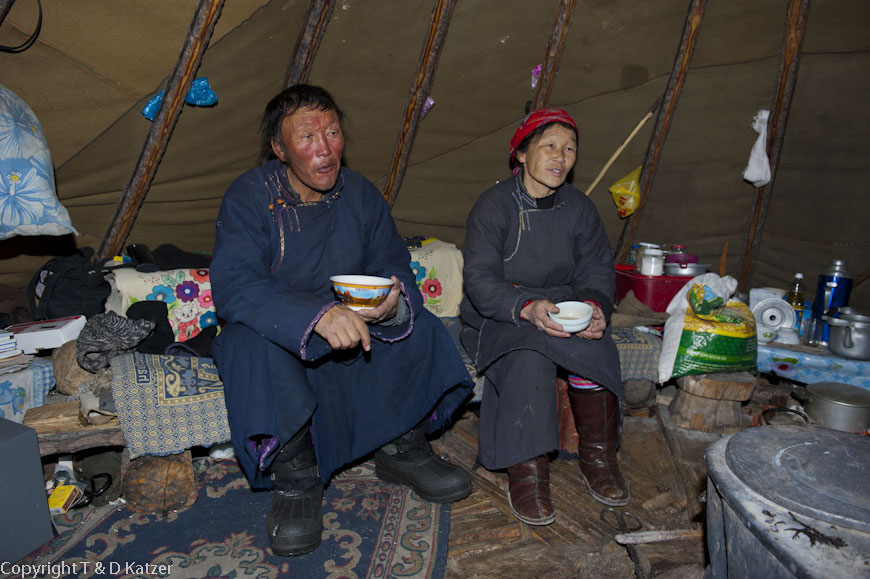
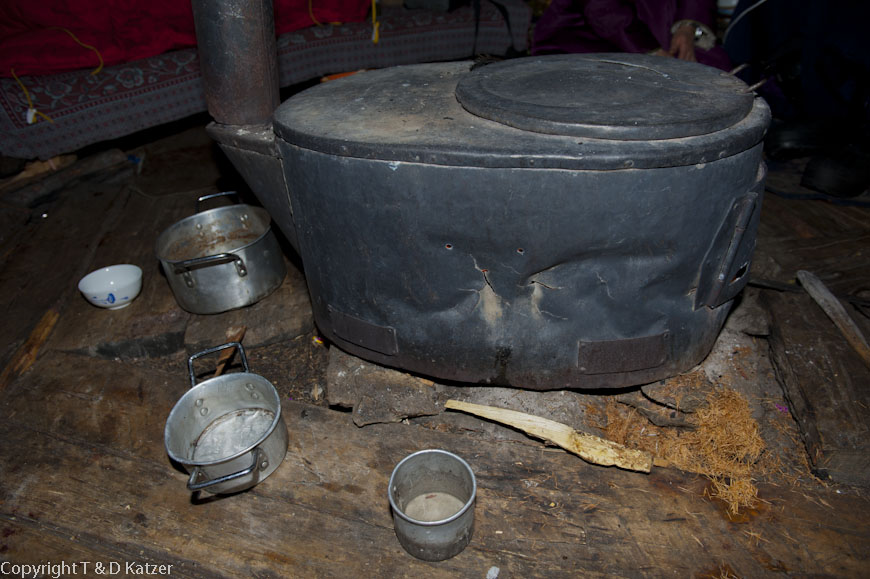

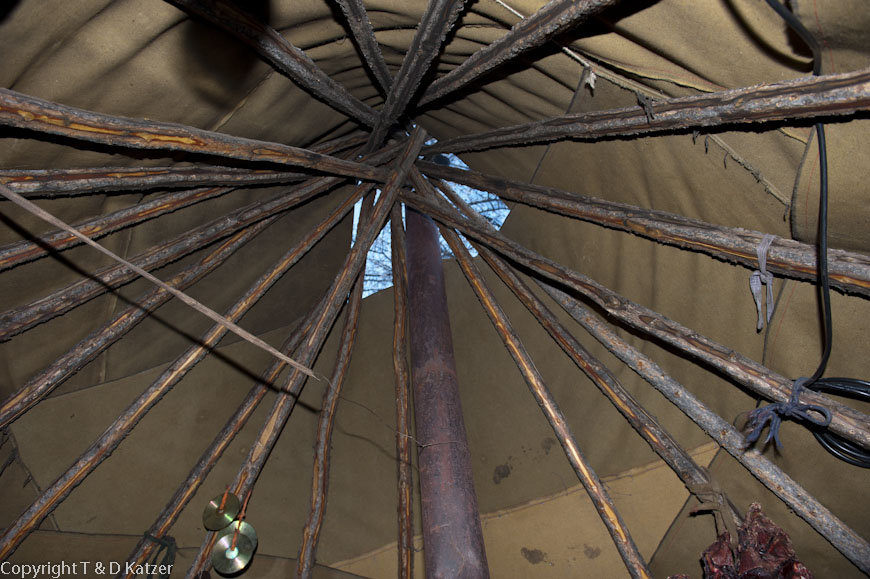
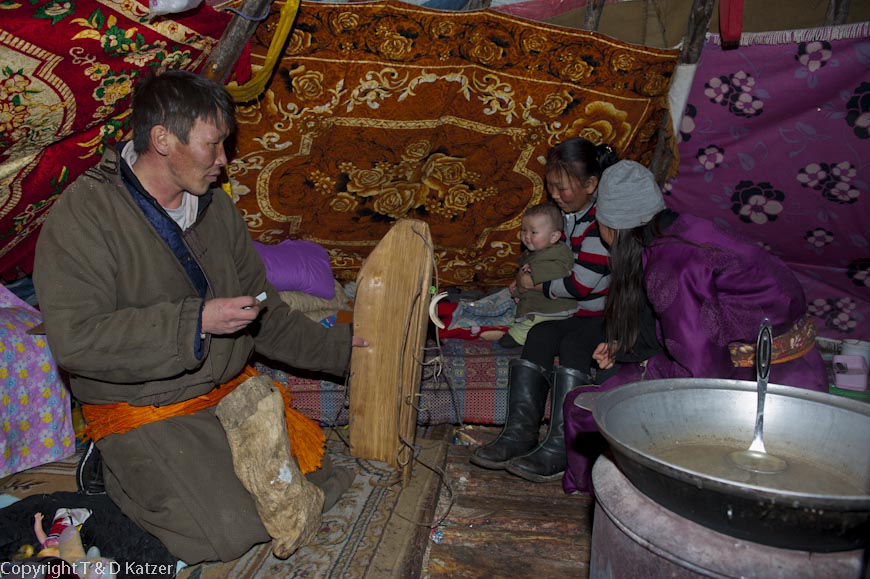

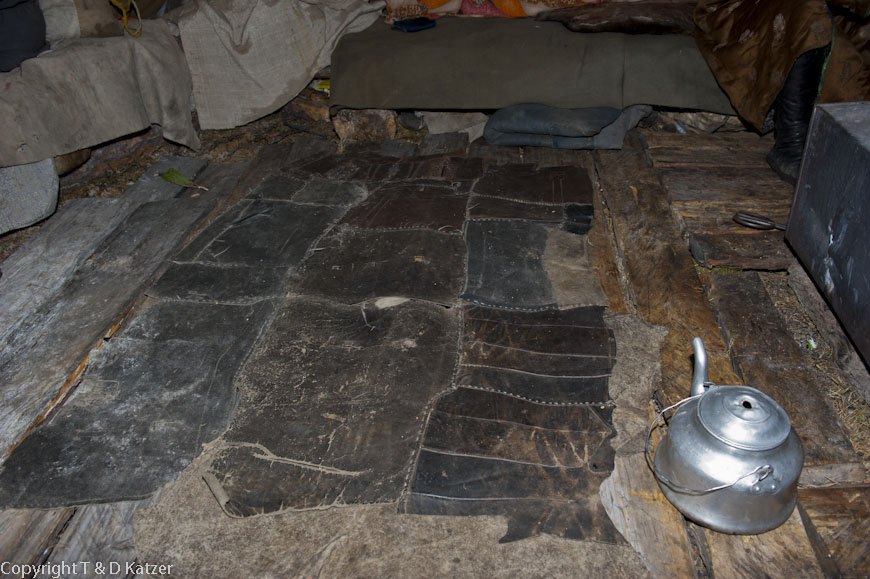
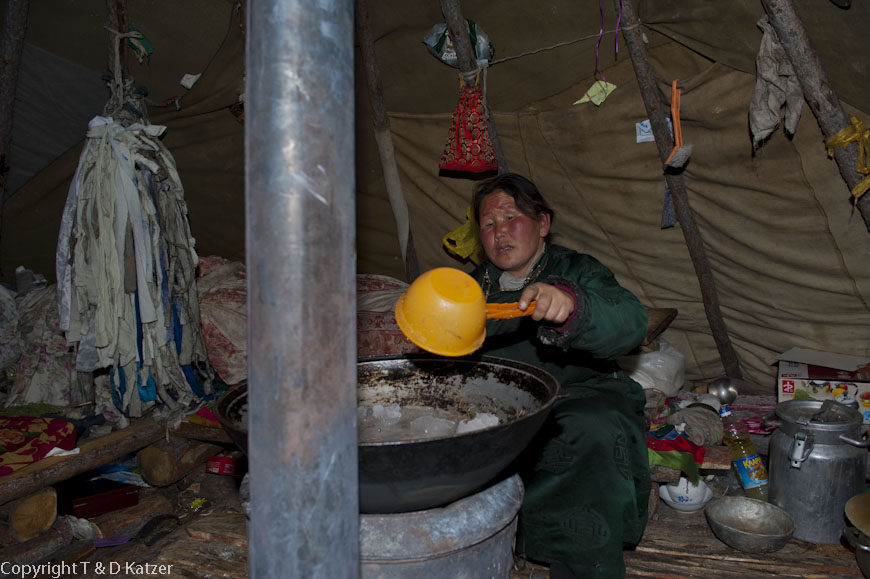


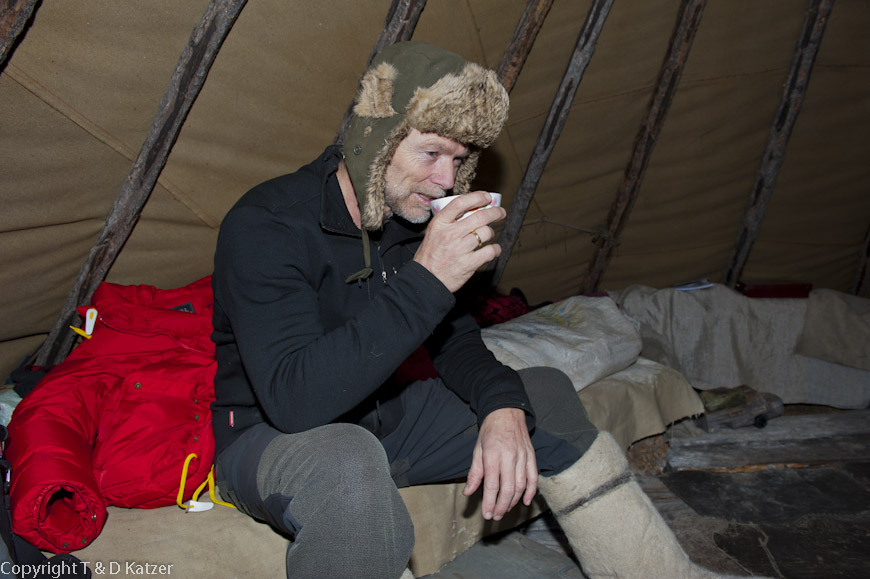
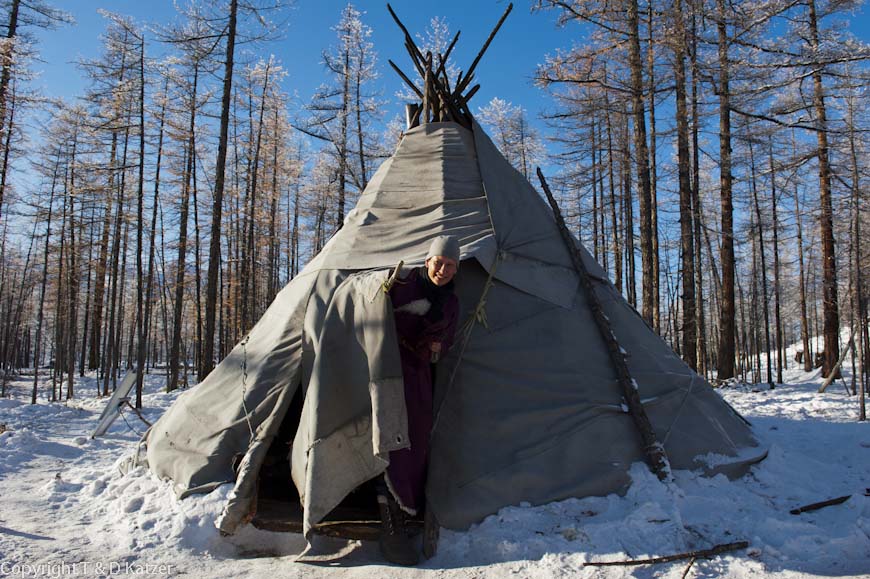

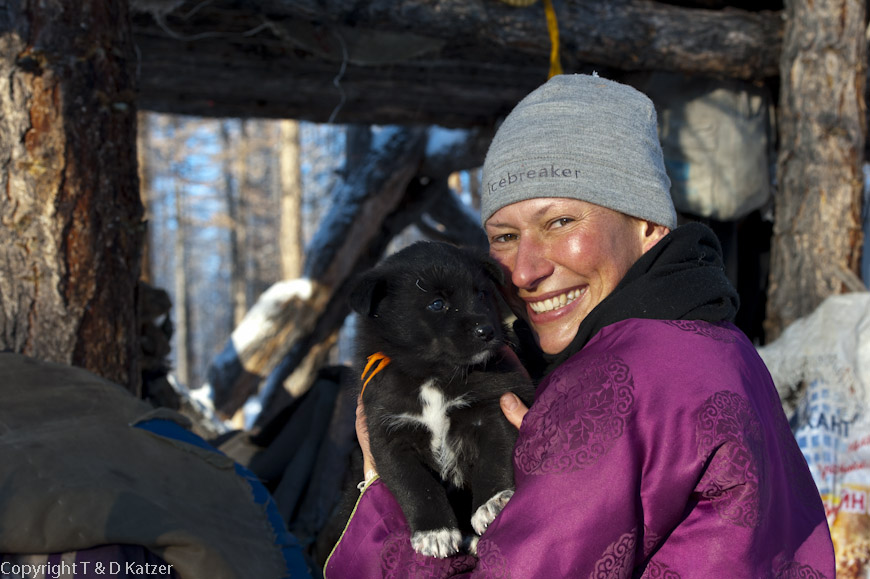
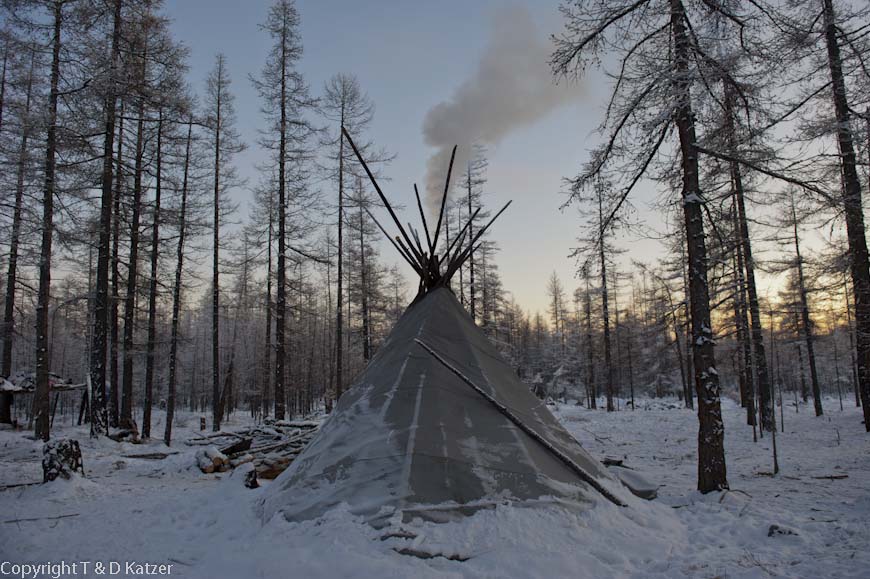
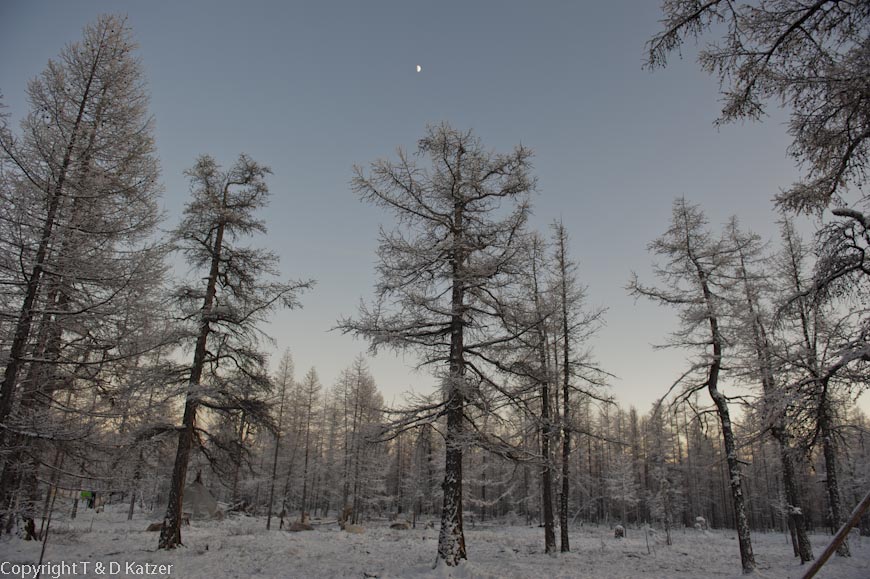
After settling in and getting to know each other, it’s high time to pay a visit to the individual tipis. Because we don’t want to come empty-handed, Tanja is putting together something for each tent and its inhabitants that will hopefully be of use or enjoyment to them. “Did you put the ropes in?” she asks. “I did,” I reply, closing the door of our yurt. We follow the narrow snow path and look for tipi three, where 54-year-old Darimaa and her husband Ovogdorj live. As decency and custom demand, we make ourselves heard with loud steps and a shout before we enter the tipi. The two of them laugh as we lift the low entrance made of rough canvas and step into the dark interior. “Sit down,” says Darimaa, pointing to the sleeping area crouching to the left of the tinny cannon stove. We settle down on the rough planks, which are only 10 centimeters above the ground. A blanket and a wild boar skin, which serve as a mattress and blanket, lie on top. Darimaa hands us a bowl of bread and immediately pours us tea in two bowls. It tastes salty. As there is no reindeer milk at this time of year, it is black. Darimaa and Ovogdorj sit opposite us on a bedstead that is also made of rough hewn planks close to the ground. While we have a rudimentary chat, Ovogdorj puts wood in the stove in the middle of the tent between us. Opposite the entrance, also right next to the tent wall, is a third sleeping area of the same design. The floor is covered with rough wooden planks with slits and gaps through which the forest floor can be seen. In its center is a recess large enough for the heavily dented stove, riveted together from pieces of sheet metal, which stands on rough stones and emits a roaring heat. Chopped wood is stacked to the left and right of the entrance. This supply is usually prepared for the evening, the morning or bad weather.
While Tanja has Ovogdorj show her the knot with which the reindeer are tied, I let my eyes wander curiously. I have visited many indigenous peoples in my life as a traveler. In West New Guinea, I was able to admire the leaf-covered wooden huts of the Yalis. At that time still a ritually cannibalistic tribe. I lived in shabonos, the roundhouses of the Yanomami Indians in the jungle of Venezuela. Spent weeks in the huts built from leaves and wood by the Auca Indians in the Ecuadorian jungle. Lived in the mud huts of the Wai-Wai Indians in former British Guyana on the north coast of South America and many other strange dwellings that people of different cultures and races build to live in. So far, however, I have never seen the inside of an Indian tent in operation. Around 20 wooden poles rise up like tripods an estimated three meters into the air. They are wearing a green, coarse canvas which, as far as we have heard, was donated by the government. Only a few years ago, the Tuwa used skins, cloth and perhaps even bark as tent skins. The top, from which the tent poles protrude, is open and the canvas is sometimes folded down so that it forms a kind of chimney. The sheet metal stove pipe is inserted through it. Years ago, when the cheap tin stoves did not yet exist, the smoke from the fire in the center of the tent was drawn upwards through the always open hole in the interlocking wooden poles.
A few old CD disks hang from the tent poles. “What do you have CDs hanging there for?” I wonder. “This gives us better reception with our cell phones,” answers Darimaa. Progress does not stop at a tepee and the taiga, because almost everyone in Tuva has had a cell phone for some time now. I also recognize a radio which is enthroned on a wooden peg next to the bed. The devices are charged with solar panels that are set up in front of the tipi, hung on the tent or in the trees. Unfortunately, the Tuwas have not yet been told how to charge the batteries with a charge controller. They connect the solar panels, some of which are provided to them by the government, directly to the battery. This is one reason why they are constantly overcharged and are usually deeply discharged by the consumer connected to them. Such a battery usually only lasts a few months, with a lot of luck just under a year. “I really must explain to you how to charge and discharge batteries,” I say to Tanja, pointing to the car battery standing on the cold floor next to the radio.
To say goodbye, Tanja gives Darimaa some incense and I give Ovogdorj a piece of rope with which he can tie his reindeer. “Bairlalaa. Irj irj baigaara”, (Thank you. “Come whenever you want”) they say with a friendly laugh.
As Sainaa, their daughter, lives right next door in tipi four with her husband Hadaa and their little daughter Undramaa, who was born a few months ago, we also visit the young family. They proudly show us their little daughter, who often sleeps on a wooden hanging cradle. “Why did you attach the boar’s tooth to it?” Tanja asks. “This helps our child to sleep peacefully and have good dreams,” explains Hadaa. Compared to the tipi we just visited, the tent walls are covered with colorful fabrics. This means that it lacks a little originality, but is admittedly quite cozy. Here, too, we hand over a few small gifts as a farewell gift. Sainaa gets a bottle of baby oil for her baby and Hadaa a rope for the reindeer. We are bid a friendly farewell and also asked to visit them again.
Buyantogtoh, the sister of Shman Gamba, also gives us a friendly welcome. As we enter her tipi, she is working on a piece of fur to make shoes, she explains. As usual, we are offered tea and this time even a few dry cookies. Buyantogtoh lives all alone in her simple but very tidy tipi. In contrast to the other tents, she has spread a large piece of patched-up leather on the wooden floor boards to create a kind of floor.
It’s a bit chaotic in tipi seven belonging to the shaman Saintsetseg, who visits us several times a day with her daughter Monkoo. The snow is melting as we enter. Basically, it looks very similar in every Tuwa tent, if only because of the same construction. Some are tidier than others. Some are more romantic or more simply furnished. Just like it is at home. In Saintsetseg’s tipi, there are also lots of fabric flags, leather bags and colorful chains hanging from the tent poles. A sign that as a shaman or, in other words, as a religious specialist, she has the ability to make contact with spiritual powers and spirits and to travel through ecstasy to the worlds beyond, for example to heal illnesses or to accompany the wandering soul of a deceased person into the afterlife.
The dog nests are located next to the tipis. These are small pointed huts made of wood which, with a little imagination, resemble a tepee. The Tuwa hunting dogs live here. They are loved, trained and well-fed by their masters and are of fundamental importance for a successful hunt. Sometimes they are also allowed into the tipi to warm themselves for a short time by the fire in the stove. “Look at the little ones,” says Tanja, taking one of the puppies in her arms. She hugs and strokes the ball of wool. Then she puts him down again, whereupon he wiggles squealing into his dog’s nest to make himself comfortable.
On the way back we walk past the various high stands where the Tuwa store their meat, provisions and other possessions safe from wolves and dogs. The sun has already set. Larches stretch their needleless branches into the twilight and the cloudless sky. The moon is already high and shimmers through the branches like an oversized star. Smoke rises from the tops of the tipis as the night reaches into the sky. The snow crunches under our feet and we realize with every step that we have found one of the last paradises of mankind. But of course we realize that this statement is limited to visual perception. The life of every person living here would fill a thick book. A book in which drama and tragedy play major roles.
We look forward to your comments!

